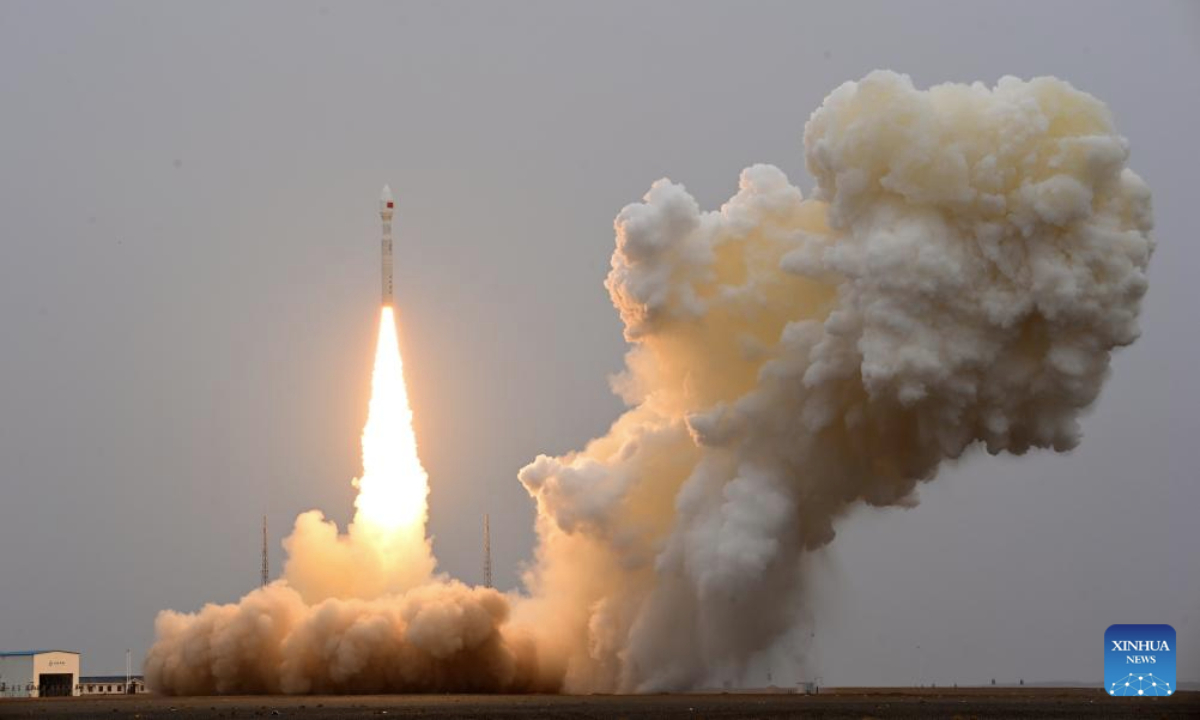
The Lijian-1 Y7 carrier rocket with six satellites onboard blasts off from the Dongfeng commercial space innovation pilot zone in northwest China, May 21, 2025. The rocket was launched at 12:05 p.m. (Beijing Time), and sent a group of satellites into the planned orbits. This launch marks the seventh flight mission of the Lijian-1 carrier rocket series. (Photo by Wang Jiangbo/Xinhua)
South China's Guangdong Province on Tuesday revealed a 21-point action plan to promote high-quality development of the province's commercial space industry from 2025 to 2028, aiming to foster a fully integrated commercial space ecosystem covering launch, satellite-rocket synergy, and space-to-ground services.
The action plan supports enterprises investing in the satellite constellations for civil and commercial applications, offering a "green channel" for project approval and coordination support for satellite frequencies and orbital resources, according to the plan published on Guangdong's official website.
The plan supports enterprises in developing ground-station network nodes such as satellite receiving stations, tracking and control stations, and data relay stations according to commercial satellite operation needs, and encourages global deployment of ground station nodes. Financial support of 10 percent of total investment will be provided, with a maximum of 2 million yuan per node and an annual cap of 10 million yuan per enterprise, according to the plan.
The Guangdong provincial government will promote the cluster development of the space launch and satellite industry. Rockets, satellites, key system components, and application terminal products are included in the provincial policy support for the development and promotion of major first-unit (set) technical equipment, with eligible complete equipment receiving rewards ranging from 7 million yuan to 9 million yuan per set, according to the plan.
The document mentions the construction of specialized commercial space industrial parks. Local governments in Guangdong are encouraged to leverage their advantages for differentiated development, planning specialized commercial space parks according to local conditions, and promoting the aggregation of upstream and downstream enterprises in the industry chain.
Regarding satellite applications, the document proposes accelerating satellite internet applications in frontier areas such as the low-altitude economy, mobile communications, logistics, smart cities, space mining, space tourism, and emergency rescue, implementing a series of major application scenario innovation demonstration projects. It also aims to empower public services and expand application scale in midstream industries, including aviation, maritime, connected vehicles, and oil and power sectors.
The document further emphasizes leveraging the international trade and economic cooperation advantages of the Guangdong-Hong Kong-Macao Greater Bay Area, supporting commercial space enterprises to participate in the formulation of international outer space rules and standards, deeply engage in global governance of outer space, and providing a one-time reward of up to 500,000 yuan for such efforts.
The commercial space industry was once again included in the 2025 Government Work Report, positioning it as a strategic emerging industry and an industry of the future. Beijing, Shanghai, Central China's Hubei, Southwest China's Chongqing, Guangdong, South China's Hainan, and other regions have issued policies to further promote the development of commercial space.
On April 24, 2025, Shanghai issued a series of measures to expand the city's commercial space industry to about 100 billion yuan by 2027. The measures provide proportional funding subsidies for the development of commercial rockets, satellites, terminals, and the R&D of core products, with a maximum of 300 million yuan, accelerating industrialization scale.
As early as January 2024, Beijing issued an action plan for accelerating commercial space innovation and development from 2024 to 2028, proposing that by 2028, more than 500 high-tech enterprises, over 100 specialized and innovative enterprises, and more than 10 unicorns will be introduced and cultivated, with over 20 listed companies.






